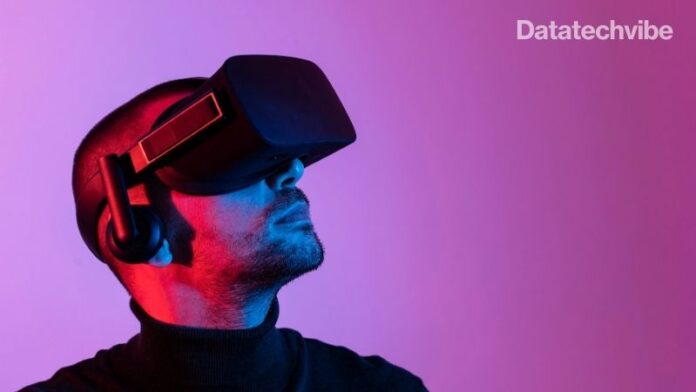Garth’s dream of climbing Delicatessen’ the ultimate climb in Punta Du Corbi, was just a few holds away when he lost grip near the summit of the 1,040 meters high mountain.
But he was safe and sound in an Adidas retail outlet at the VR experience. In 2017, sportswear brand Adidas partnered with emerging tech marketing agency Somewhere Else, for a campaign that followed the Delicatessen mountain-climbing journey of two extreme athletes – Ben Rueck and Delaney Miller, with a 360-degree view of the journey. Viewers were able to follow the climbers and climb along with them, using a VR headset and two sensory remote controls.
The VR campaign provided a great marketing campaign for TERREX, Adidas’s line of outdoor apparel and accessories. Stuart Wells, Global Director of Brand Marketing for Adidas TERREX, said: “Our athletes are fuelled by creativity and are always pushing the boundaries of what is possible, and we’re constantly testing the limits of how we can use new technologies to convey the exploits of our athletes. With immersive technologies like VR, we’re able to replicate outdoor sports experiences that customers might not consider otherwise. With this, we’re able to introduce how exhilarating outdoor climbing can be, and help them make informed choices about Adidas TERREX products.”
When it comes to marketing, both AR and VR are no longer just buzzwords. These immersive technologies are transforming the MarTech world.
Experience matters! Customers want to experience a product before they buy it. How will a piece of furniture look in their living room? What will a certain attire look like on them? Or for that matter how will it feel to run through a desert while wearing the latest sneakers in the market? Experiential marketing has become the norm for successfully attracting, converting and retaining clients.
This is where AR and VR come into play.
Augmented reality (AR) adds digital elements to a live view. We often see this being done by using a camera on a smartphone. For example, Ikea’s AR app – Ikea Place, which you can download on your phone and through the phone camera, view how their furniture will look like in your home or office.
Virtual reality (VR), on the other hand, is an immersive experience in a simulated physical world. VR technology involves the use of VR devices like Oculus Rift, Google Cardboard, HTC Vive and such. Consumers can be physically put in a simulated environment to know what it would feel like. For example, Virtual Spaces makes VR solutions for Real Estate clients who would like to make their consumers experience and book their home even before the construction is completed.
The third kind is called Mixed Reality (MR), which combines both AR and VR and gives the user the experience of being in a simulated environment and being able to see digital elements pop up in whichever direction they look. MR is relatively new, and an early example of it is Microsoft’s HoloLens which combines an untethered device with apps and solutions that help people across businesses learn, communicate, and collaborate more effectively.
Also Read: 5 Ways You Can Use Chatbots in Marketing
In the UAE, the Dubai Electricity and Water Authority (DEWA) is one of the early HoloLens adopters. Leveraged for visualisation of scenarios, consolidating information, and remote maintenance of the Smart Power Plant, HoloLens is enabling DEWA to ensure rapid decision making, manage and forecast future demand, while improving energy efficiency and reducing power consumption.
So how are AR & VR transforming marketing? Let’s take a look at some success stories:
- Samsung’s Bedtime VR Stories app lets parents and children enjoy bedtime stories in a vibrant virtual world even when they are in two different cities. Makes for a very attractive reason to buy a Samsung phone.
- Dubai Electricity and Water Authority (Dewa) has enlisted leading AR solution and hardware provider DAQRI to develop a “smart” helmet and glasses for its engineers, using AR software created by Dubai-based Takeleap.
- Kabaq 3D Food Technologies introduced the first-ever augmented reality menu. In Dubai, Bareburger is one of the first restaurants to offer the AR menu where customers are able to view their meals from every angle before placing an order, using the Custom Snapchat World Lenses.
According to the International Data Corporation, the Middle East and Africa market is expected to achieve a huge growth soaring to a massive $6 billion by 2020 for AR and VR. Forward-thinking marketers are adopting AR/VR/MR capabilities into their strategies so as to close the gap between advertising and converting. Apple CEO Tim Cook, a strong believer of AR, has said, “I do think that a significant portion of the population of developed countries, and eventually all countries, will have AR experiences every day, almost like eating three meals a day. It will become that much a part of you.”
Also Read: Is Artificial Intelligence Creating a New Mobile Marketing Wave in the Middle East?
Though Facebook doesn’t have AR glasses yet, it’s taking a different step toward bringing augmented reality mainstream: It’s opening up a developer platform so that people can build augmented-reality features for the cameras that live inside Facebook, Instagram, Messenger, and WhatsApp.
With these immersive technologies, they can attract and convert clients faster, give product demonstrations with enhanced attributes and features, provide an entertaining immersive brand experience, and deliver a message to their audience wherever they want to receive it. AR and VR technologies have now become a marketer’s tool of choice.









